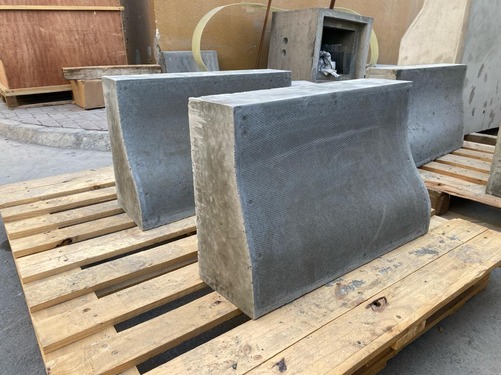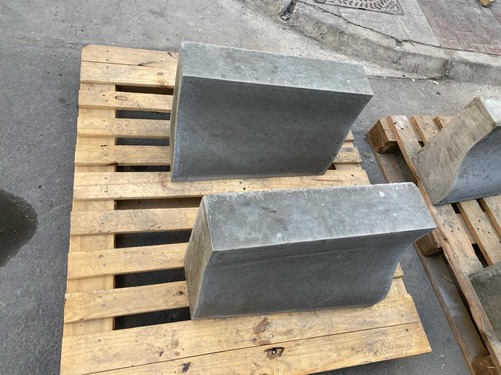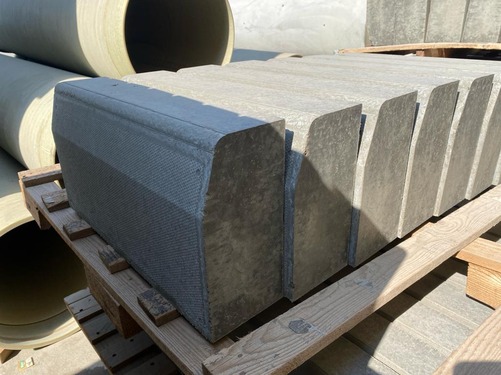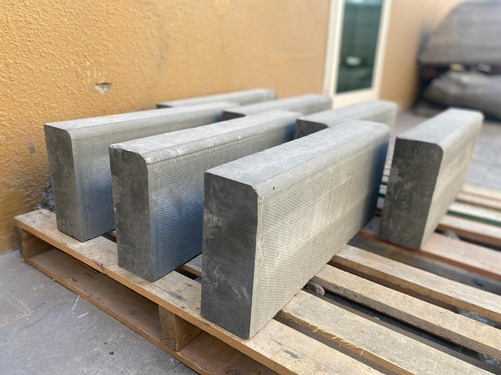KerbStone
A kerbstone, also known as a curbstone or curb, is a rigid and elevated edge or barrier that separates a roadway or pavement from the adjacent areas, such as sidewalks, pedestrian walkways, or landscaped areas. Kerbstones serve several purposes in urban and transportation infrastructure.
A kerbstone, also known as a curbstone or curb, is a rectangular block of stone or concrete that is set along the edge of a pavement or roadway. Kerbstones serve several purposes and offer various benefits in urban infrastructure and landscaping.
Uses:
- Boundary Definition: Kerbstones act as a clear demarcation between the road or pavement and adjacent areas, helping to define the boundaries of pedestrian walkways and vehicle lanes.
- Traffic Control: Kerbstones are essential for guiding and controlling the flow of traffic. They help prevent vehicles from encroaching onto sidewalks and pedestrian areas, ensuring a safer environment for both pedestrians and drivers.
- Drainage Management: Kerbstones play a crucial role in managing surface water drainage. They help direct rainwater away from the road or pavement, preventing waterlogging and erosion, and channeling it towards proper drainage systems.
- Pedestrian Safety: Raised kerbstones provide a physical barrier between pedestrians and moving vehicles, enhancing safety for people walking along sidewalks or crossing roads.
- Aesthetic Appeal: Kerbstones contribute to the overall aesthetic appeal of streets and public spaces. They come in various designs and materials, allowing for customization to match the architectural style of the surrounding environment.
Benefits:
- Safety: Kerbstones enhance road safety by preventing vehicles from veering off the road and onto pedestrian walkways. They also discourage illegal parking on sidewalks.
- Durability: Kerbstones are typically made from durable materials like concrete or natural stone, ensuring longevity and minimal maintenance requirements. They can withstand the impact of vehicle tires and harsh weather conditions.
- Traffic Management: Kerbstones help in guiding and managing traffic flow, especially in urban areas. They assist in creating organized and safe road networks.
- Accessibility: Raised kerbstones provide a tactile barrier that assists individuals with visual impairments in navigating the urban environment. Detectable warning surfaces on kerbstones alert pedestrians to transitions between road and sidewalk.
- Landscaping and Beautification: Kerbstones contribute to the landscaping of urban areas by framing green spaces, flower beds, and other decorative elements. They add a finishing touch to the overall design of streetscapes.
- Erosion Prevention: By directing rainwater away from the pavement and road surfaces, kerbstones help prevent soil erosion and maintain the integrity of the surrounding infrastructure.
In summary, kerbstones play a multifaceted role in urban infrastructure, providing functional benefits in terms of safety, traffic management, and drainage, while also contributing to the aesthetic appeal of public spaces.





